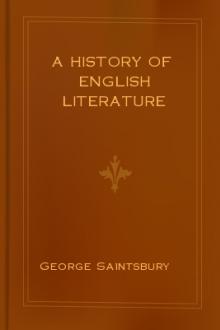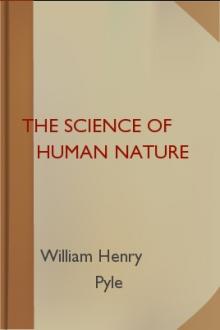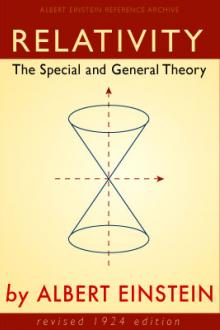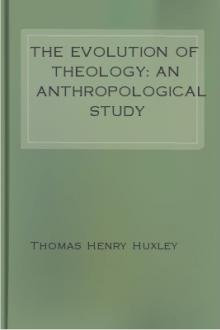Time and Tide, Sir Robert Stawell Ball [the alpha prince and his bride full story free txt] 📗

- Author: Sir Robert Stawell Ball
Book online «Time and Tide, Sir Robert Stawell Ball [the alpha prince and his bride full story free txt] 📗». Author Sir Robert Stawell Ball
Every one who visits the sea-side, or who lives at a sea-port, should know this constant for the tides, which affect him and his movements so materially. If he will discover it from his own experience, so much the better.
The first point to be ascertained is the time of high water. Do not take this from any local table; you ought to observe it for yourself. You will go to the pier head, or, better still, to some place where the rise and fall of the mere waves of the sea will not embarrass you in your work. You must note by your watch the time when the tide is highest. An accurate way of doing this will be to have a scale on which you can measure the height at intervals of five minutes about the time of high water. You will then be able to conclude the time at which the tide was actually at its highest point; but even if no great accuracy be obtainable, you can still get much interesting information, for you will without much difficulty be right within ten minutes or a quarter of an hour.
The correction for the port is properly called the "establishment," this being the average time of high water on the days of full and change of the moon at the particular port in question.
We can considerably amend the elementary notion of the tides which the former method has given us, if we adopt the plan described by Dr. Whewell in the first four editions of the _Admiralty Manual of Scientific Inquiry_. We speak of the interval between the transit of the moon and the time of high water as the luni-tidal interval. Of course at full and change this is the same thing as the establishment, but for other phases of the moon the establishment must receive a correction before being used as the luni-tidal interval. The correction is given by the following table--
Hour of Moon's transit after Sun:
0| 1 | 2 | 3 | 4 | 5 | 6 | 7 | 8 | 9 | 10 | 11 -+----+----+----+----+----+----+----+----+----+----+---- 0|-20m|-30m|-50m|-60m|-60m|-60m|-40m|-10m|+10m|+20m|+10m
Correction of establishment to find luni-tidal interval:
Thus at a port where the establishment was 3h. 25m., let us suppose that the transit of the moon took place at 6 P.M.; then we correct the establishment by -60m., and find the luni-tidal interval to be 2h. 25m., and accordingly the high water takes place at 8h. 25m. P.M.
But even this method is only an approximation. The study of the tides is based on accurate observation of their rise and fall on different places round the earth. To show how these observations are to be made, and how they are to be discussed and reduced when they have been made, I may refer to the last edition of the _Admiralty Manual of Scientific Inquiry_, 1886. For a complete study of the tides at any port a self-registering tide-gauge should be erected, on which not alone the heights and times of high and low water should be depicted, but also the continuous curve which shows at any time the height of the water. In fact, the whole subject of the practical observation and discussion and prediction of tides is full of valuable instruction, and may be cited as one of the most complete examples of the modern scientific methods.
In the first place, the tide-gauge itself is a delicate instrument; it is actuated by a float which rises and falls with the water, due provision being made that the mere influence of waves shall not make it to oscillate inconveniently. The motion of the float when suitably reduced by mechanism serves to guide a pencil, which, acting on the paper round a revolving drum, gives a faithful and unintermitting record of the height of the water.
Thus what the tide-gauge does is to present to us a long curved line of which the summits correspond to the heights of high water, while the depressions are the corresponding points of low water. The long undulations of this curve are, however, very irregular. At spring tides, when the sun and the moon conspire, the elevations rise much higher and the depressions sink much lower than they do at neap tides, when the high water raised by the moon is reduced by the action of the sun. There are also many minor irregularities which show the tides to be not nearly such simple phenomena as might be at first supposed. But what we might hastily think of as irregularities are, in truth, the most interesting parts of the whole phenomena. Just as in the observations of the planets the study of the perturbations has led us to results of the widest interest and instruction, so it is these minor phenomena of the tides which seem most pregnant with scientific interest.
The tide-gauge gives us an elaborate curve. How are we to interpret that curve? Here indeed a most beautiful mathematical theorem comes to our aid. Just as ordinary sounds consist of a number of undulations blended together, so the tidal wave consists of a number of distinct undulations superposed. Of these the ordinary lunar tide and the ordinary solar tide are the two principal; but there are also minor undulations, harmonics, so to speak, some originating from the moon, some originating from the sun, and some from both bodies acting in concert.
In the study of sound we can employ an acoustic apparatus for the purpose of decomposing any proposed note, and finding not only the main undulation itself, but the several superposed harmonics which give to the note its timbre. So also we can analyze the undulation of the tide, and show the component parts. The decomposition is effected by the process known as harmonic analysis. The principle of the method may be very simply described. Let us fix our attention on any particular "tide," for so the various elements are denoted. We can always determine beforehand, with as much accuracy as we may require, what the period of that tide will be. For instance, the period of the lunar semi-diurnal tide will of course be half the average time occupied by the moon to travel round from the meridian of any place until it regains the same meridian; the period of the lunar diurnal tide will be double as great; and there are fortnightly tides, and others of periods still greater. The essential point to notice is, that the periods of these tides are given by purely astronomical considerations from the periods of the motions theory, and do not depend upon the actual observations.
We measure off on the curve the height of the tide at intervals of an hour. The larger the number of such measures that are available the better; but even if there be only three hundred and sixty or seven hundred and twenty consecutive hours, then, as shown by Professor G. H. Darwin in the _Admiralty Manual_ already referred to, it will still be possible to obtain a very competent knowledge of the tides in the particular port where the gauge has been placed.
The art (for such indeed it may be described) of harmonic analysis consists in deducing from the hourly observations the facts with regard to each of the constituent tides. This art has been carried to such perfection, that it has been reduced to a very simple series of arithmetical operations. Indeed it has now been found possible to call in the aid of ingenious mechanism, by which the labours of computation are entirely superseded. The pointer of the harmonic analyzer has merely to be traced over the curve which the tide-gauge has drawn, and it is the function of the machine to decompose the composite undulation into its parts, and to exhibit the several constituent tides whose confluence gives the total result.
As if nothing should be left to complete the perfection of a process which, both from its theoretical and its practical sides, is of such importance, a machine for predicting tides has been designed, constructed, and is now in ordinary use. When by the aid of the harmonic analysis the effectiveness of the several constituent tides affecting a port have become fully determined, it is of course possible to predict the tides for that port. Each "tide" is a simple periodic rise and fall, and we can compute for any future time the height of each were it acting alone. These heights can all be added together, and thus the height of the water is obtained. In this way a tide-table is formed, and such a table when complete will express not alone the hours and heights of high water on every day, but the height of the water at any intervening hour.
The computations necessary for this purpose are no doubt simple, so far as their principle is concerned; but they are exceedingly tedious, and any process must be welcomed which affords mitigation of a task so laborious. The entire theory of the tides owes much to Sir William Thomson in the methods of observation and in the methods of reduction. He has now completed the practical parts of the subject by inventing and constructing the famous tide-predicting engine.
The principle of this engine is comparatively simple. There is a chain which at one end is fixed, and at the other end carries the pencil which is pressed against the revolving drum on which the prediction is to be inscribed. Between its two ends the chain passes up and down over pulleys. Each pulley corresponds to one of the "tides," and there are about a dozen altogether, some of which exercise but little effect. Of course if the centres of the pulleys were all fixed the pen could not move, but the centre of each pulley describes a circle with a radius proportional to the amplitude of the corresponding tide, and in a time proportional to the period of that tide. When these pulleys are all set so as to start at the proper phases, the motion is produced by turning round a handle which makes the drum rotate, and sets all the pulleys in motion. The tide curve is thus rapidly drawn out; and so expeditious is the machine, that the tides of a port for an entire year can be completely worked out in a couple of hours.
While the student or the philosopher who seeks to render any account of the tide on dynamical grounds is greatly embarrassed by the difficulties introduced by friction,





Comments (0)